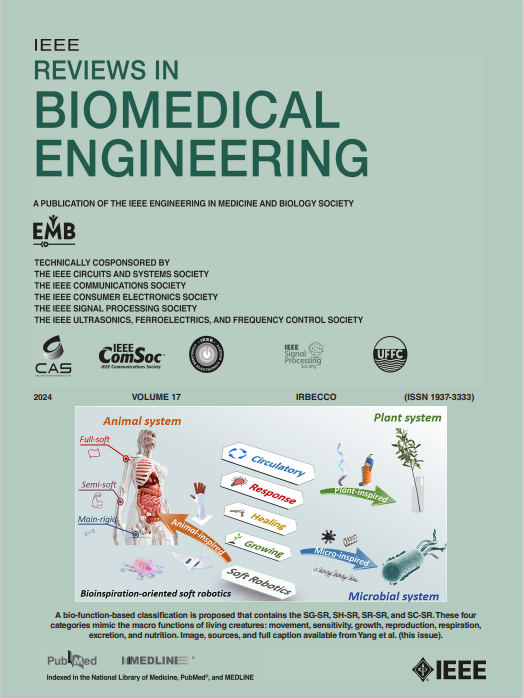A Wearable Tele-Health System towards Monitoring COVID-19 and Chronic Diseases
IF 17.2
1区 工程技术
Q1 ENGINEERING, BIOMEDICAL
引用次数: 34
Abstract
Severe acute respiratory syndrome coronavirus 2 (SARS-CoV-2) has caused a pandemic since early 2020. The coronavirus disease 2019 (COVID-19) has already caused more than three million deaths worldwide and affected people's physical and mental health. COVID-19 patients with mild symptoms are generally required to self-isolate and monitor for symptoms at least for 14 days in the case the disease turns towards severe complications. In this work, we overviewed the impact of COVID-19 on the patients' general health with a focus on their cardiovascular, respiratory and mental health, and investigated several existing patient monitoring systems. We addressed the limitations of these systems and proposed a wearable telehealth solution for monitoring a set of physiological parameters that are critical for COVID-19 patients such as body temperature, heart rate, heart rate variability, blood oxygen saturation, respiratory rate, blood pressure, and cough. This physiological information can be further combined to potentially estimate the lung function using artificial intelligence (AI) and sensor fusion techniques. The prototype, which includes the hardware and a smartphone app, showed promising results with performance comparable to or better than similar commercial devices, thus potentially making the proposed system an ideal wearable solution for long-term monitoring of COVID-19 patients and other chronic diseases.用于监测新冠肺炎和慢性病的可穿戴远程健康系统
严重急性呼吸系统综合征冠状病毒2型自2020年初以来引发了一场大流行。2019冠状病毒病(新冠肺炎)已在全球造成300多万人死亡,并影响人们的身心健康。症状轻微的新冠肺炎患者通常需要自我安慰,并在病情发展为严重并发症的情况下监测症状至少14天。在这项工作中,我们概述了新冠肺炎对患者总体健康的影响,重点关注患者的心血管、呼吸和心理健康,并调查了几种现有的患者监测系统。我们解决了这些系统的局限性,并提出了一种可穿戴远程健康解决方案,用于监测一组对新冠肺炎患者至关重要的生理参数,如体温、心率、心率变异性、血氧饱和度、呼吸频率、血压和咳嗽。可以使用人工智能(AI)和传感器融合技术进一步组合这些生理信息,以潜在地估计肺功能。该原型包括硬件和智能手机应用程序,显示出了与类似商业设备相当或更好的性能,有望成为长期监测新冠肺炎患者和其他慢性病的理想可穿戴解决方案。
本文章由计算机程序翻译,如有差异,请以英文原文为准。
求助全文
约1分钟内获得全文
求助全文
来源期刊

IEEE Reviews in Biomedical Engineering
Engineering-Biomedical Engineering
CiteScore
31.70
自引率
0.60%
发文量
93
期刊介绍:
IEEE Reviews in Biomedical Engineering (RBME) serves as a platform to review the state-of-the-art and trends in the interdisciplinary field of biomedical engineering, which encompasses engineering, life sciences, and medicine. The journal aims to consolidate research and reviews for members of all IEEE societies interested in biomedical engineering. Recognizing the demand for comprehensive reviews among authors of various IEEE journals, RBME addresses this need by receiving, reviewing, and publishing scholarly works under one umbrella. It covers a broad spectrum, from historical to modern developments in biomedical engineering and the integration of technologies from various IEEE societies into the life sciences and medicine.
 求助内容:
求助内容: 应助结果提醒方式:
应助结果提醒方式:


